Prodoxus marginatus
including P. pulverulentus Riley
Olle PellmyrAdult Characteristics
Wing expanse 8-12 mm. The smallest of all Prodoxus species. Forewing in northern populations white with a dark patch near the outer edge in the female, diffuse to absent in male; in southern populations, males generally have a gray streak parallel with the outer edge, whereas females have extensive dark scaling over the forewing, creating a gray shade over the wing. Hindwings uniformly light to medium gray.
Comparison with Similar Species
Mesepiola specca is similar in size, but differs in having interspersed rusty scales in both sexes, and in the female having the prominent abdominal hook.
Host, Oviposition, and Larval Feeding Habits
The species occurs throughout the range of its exclusive host, Yucca whipplei (Agavaceae). Larvae feed inside the basal vegetative portion of the host fruit and occasionally also into the adjacent pedicel portion. Pupation takes place inside the gallery.
Geographic Distribution
The host occurs in central-southern cismontane California, in Sierra Nevada north to Fresno Co, in northwestern Arizona (USA), and in Baja California Norte (Mexico) to the Vizcaino region (Powell and Mackie 1966). The moth is known throughout the U.S. portion of this range, except in Arizona. The transition between the light and dark forms coincides in the transverse ranges with the northern range edge of P. cinereus.
Habitat
In coastal chaparral and montane dry shrubby grassland with Yucca whipplei (Agavaceae).

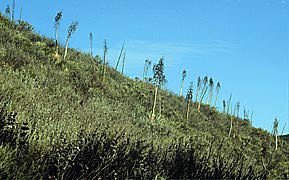
Typical habitat with old, fruiting Y. whipplei; Santa Barbara Co., California.
Phylogenetic Notes
The light and dark forms were originally described as Prodoxus marginatus and P. pulverulentus, respectively. Davis (1967) retained this status with reservation. Powell and Mackie (1966) suggested that it represented geographically structured intraspecific variation. They proposed subspecies rank but did not formally describe them as such. Frack (1982) agreed with the judgment that the two taxa shouldbe considered one species.
References
Davis, D.R. 1967. A revision of the moths of the subfamily Prodoxinae (Lepidoptera: Incurvariidae). U.S. Nat. Hist. Mus., Bull. 255:1-170. Smiths. Contrib. Zool. 524:1-88.
Frack, D.C. 1982. A systematic study of prodoxine moths (Adelidae: Prodoxinae) and their hosts (Agavaceae), with descriptions of the subfamilies of Adelidae (s. lat.). M.S. thesis, California State Polytechnic University, Pomona, CA.
Powell, J.A. and R.A. Mackie. 1966. Biological interrelationships of moths and Yucca whipplei. Univ. Calif. Publ. Entomol. 42:1-59.
Title Illustrations

| Scientific Name | Prodoxus marginatus |
|---|---|
| Location | San Diego Co., California, USA |
| Specimen Condition | Dead Specimen |
| Sex | Male |
| Image Use |
 This media file is licensed under the Creative Commons Attribution-NonCommercial License - Version 3.0. This media file is licensed under the Creative Commons Attribution-NonCommercial License - Version 3.0.
|
| Copyright |
© 1996

|
| Scientific Name | Prodoxus marginatus |
|---|---|
| Location | San Diego Co., California, USA |
| Specimen Condition | Dead Specimen |
| Sex | Female |
| Image Use |
 This media file is licensed under the Creative Commons Attribution-NonCommercial License - Version 3.0. This media file is licensed under the Creative Commons Attribution-NonCommercial License - Version 3.0.
|
| Copyright |
© 1996

|
| Scientific Name | Prodoxus marginatus |
|---|---|
| Location | Riverside Co., California, USA |
| Specimen Condition | Dead Specimen |
| Sex | Female |
| Image Use |
 This media file is licensed under the Creative Commons Attribution-NonCommercial License - Version 3.0. This media file is licensed under the Creative Commons Attribution-NonCommercial License - Version 3.0.
|
| Copyright |
© 1996

|
About This Page

University of Idaho, Moscow, Idaho, USA
Page copyright © 1996
 Page: Tree of Life
Prodoxus marginatus . including P. pulverulentus Riley.
Authored by
Olle Pellmyr.
The TEXT of this page is licensed under the
Creative Commons Attribution-NonCommercial License - Version 3.0. Note that images and other media
featured on this page are each governed by their own license, and they may or may not be available
for reuse. Click on an image or a media link to access the media data window, which provides the
relevant licensing information. For the general terms and conditions of ToL material reuse and
redistribution, please see the Tree of Life Copyright
Policies.
Page: Tree of Life
Prodoxus marginatus . including P. pulverulentus Riley.
Authored by
Olle Pellmyr.
The TEXT of this page is licensed under the
Creative Commons Attribution-NonCommercial License - Version 3.0. Note that images and other media
featured on this page are each governed by their own license, and they may or may not be available
for reuse. Click on an image or a media link to access the media data window, which provides the
relevant licensing information. For the general terms and conditions of ToL material reuse and
redistribution, please see the Tree of Life Copyright
Policies.
Citing this page:
Pellmyr, Olle. 1996. Prodoxus marginatus . including P. pulverulentus Riley. Version 01 January 1996 (under construction). http://tolweb.org/Prodoxus_marginatus/12434/1996.01.01 in The Tree of Life Web Project, http://tolweb.org/




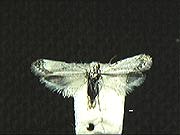
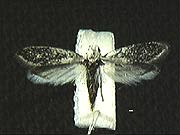
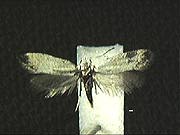
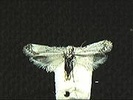

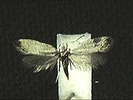


 Go to quick links
Go to quick search
Go to navigation for this section of the ToL site
Go to detailed links for the ToL site
Go to quick links
Go to quick search
Go to navigation for this section of the ToL site
Go to detailed links for the ToL site